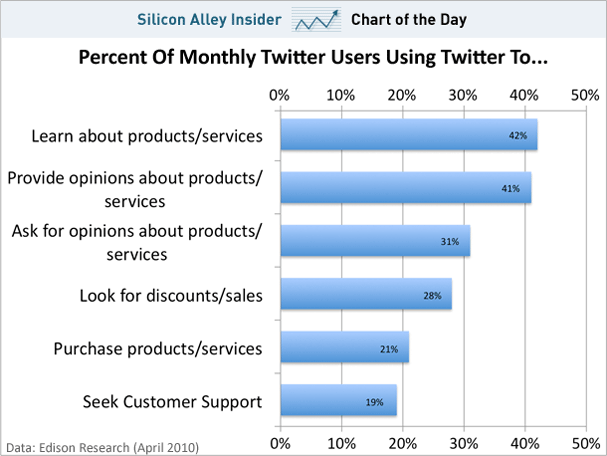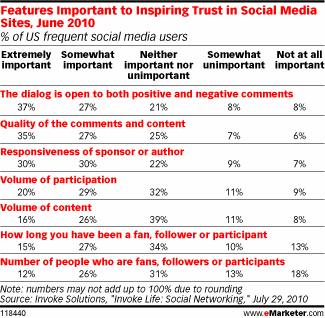An ECOSYSTEM is s a community of living and non-living things that works together. Many species and diversity are signs of a healthy ecosystem where it is less likely a natural disaster or climate change can cause serious damage.
In marketing, ECOSYSTEM is a metaphor to describe the community between consumers and brands. It is based on the quality of their interactions. If there is togetherness and connections, the ecosystem thrives; it attracts people who share similar interests and builds brand equity. An area where this is particularly in evidence and measurable is social media. Here’s how to think about it.
 Here’s how to explain the social media ecosystem to your boss with 7 compelling charts.
Here’s how to explain the social media ecosystem to your boss with 7 compelling charts.
1. BEFORE CONSUMERS GO TO A WEBSITE, THEY’RE LIKELY TO GO TO A BRAND’S SOCIAL NETWORKS: More consumers are turning to a brand’s social networks to research, comment and even buy products before they go to the website. Not only that, but once consumers vet a brand through their social networks, they show high Click Thru Rates to the brand’s website. (Source: shop.org)
1. SHOW CUSTOMERS SOME LOVE AND THEY’LL RETURN THE AFFECTION: If consumers are going to be Fans and “Like” a brand, they want something extra – like a special offer or promotion. But, when brands make the first move, consumers return the favor with their support:
3. FACEBOOK FANS ARE MORE LIKELY TO CONTINUE USING AND RECOMMENDING A BRAND. By a substantial margin according to WOMMA (Word of Mouth Marketing Association) and WOMMA says the value of the average Facebook Fan is $71.84. So it makes financial sense to listen to the social media ecosystem.
4. CONSUMERS USE TWITTER AS A LEARNING AND FEEDBACK CHANNEL FOR BRANDS. Almost half the time consumers are on Twitter, they’re learning and providing opinions about products according to Edison Research. For twenty percent of the time, they’re actually buying.
5. SOCIAL SHARING ACCOUNTS FOR ROUGHLY 31% OF TRAFFIC TO A WEBSITE. When you consider that many companies pay for online ads and banners to drive traffic to their website, this is a pretty good reason to be consumer-centric and a good listener in the social media ecosystem. (Source: Share This)
6. A BRAND MAY BE POPULAR BUT THAT DOESN’T MEAN IT’S TRUSTED: Trust is a quality that inspires but popularity doesn’t necessary translate into trust. How do you gain trust in social media? According to eMarketer, try owning up to the good and the bad, being timely in responses and genuine because these qualities carry more value than being popular.
7. SOCIAL MEDIA HAS CHANGED THE BUYING CYCLE. That’s the opinion of the Harvard Business Review. They say social media has added a new phase to the buying cycle. A product purchase used to be a 3-phase process involving 1) “Consideration” of a number of options 2) “Evaluation” to more methodologically narrow the choices and then 3) “Buy.” Now, there’s a 4th phase after they “Buy” called the “Loyalty Loop” where bonding, talking and sharing take place, all due to social media. Here’s the “Before” and “After.”
Do you think it’s worthwhile to be looking at the social media ecosystem for your brand and are you listening?


![motivations-for-following-a-brand-exact-target-use1[1]](https://barnraisersllc.com/wp-content/uploads/2011/06/motivations-for-following-a-brand-exact-target-use11.jpg)


![SHARETHIS[1]](https://barnraisersllc.com/wp-content/uploads/2011/06/SHARETHIS1.png)

![tmpphpAYPCk2[1]](https://barnraisersllc.com/wp-content/uploads/2011/06/tmpphpAYPCk21.jpg)




Very interesting charts and explanations, I think I might write about these charts in reference to this Blog. Though it will be in German 🙂 Thanks for the find!
No problem Christian. Glad it was helpful and happy to have the charts used again in German now in addition to English. Rob
[…] I follow on Twitter tweeted a link to a blog post titled How to explain the social media ecosystem to your boss with 7 compelling charts. Go read the article, just be sure to come […]
Good stuff! My challenge, however, is mapping out the social ecosystem in play for one very specific event, which includes a but if a 360 campaign within the broader scheme of the event.
[…] stats come from comScore, WOMMA, HubSpot and Amercian Express. These are great companies. BarnRaisers is grateful to be […]
[…] stats are sourced from comScore, WOMMA, HubSpot and Amercian Express. These are great companies BarnRaisers is grateful to be associated […]
[…] on Facebook are as close as it gets in social media and is a good metric to track. WOMMA estimates the value of a “Like” to be worth $71.84 to a brand. So it worth it not only […]
[…] on Facebook are as close as it gets in social media and is a good metric to track. WOMMA estimates the value of a “Like” to be worth $71.84 to a brand. So it’s worth it […]
[…] stats are sourced from comScore, WOMMA, HubSpot and Amercian Express. These are great companies BarnRaisers is grateful to be associated […]